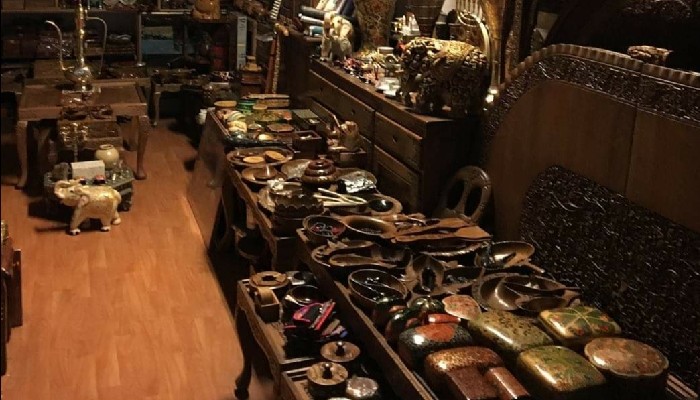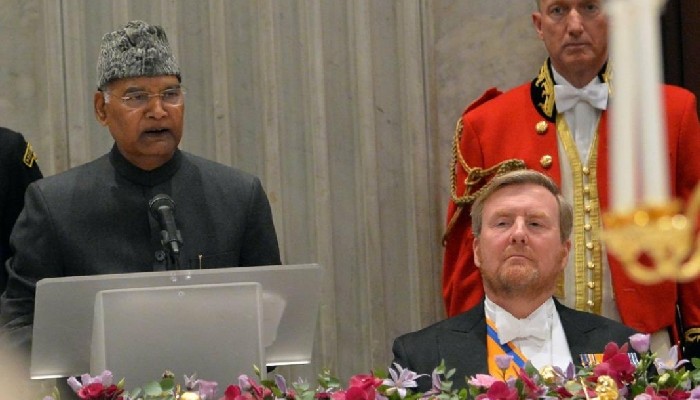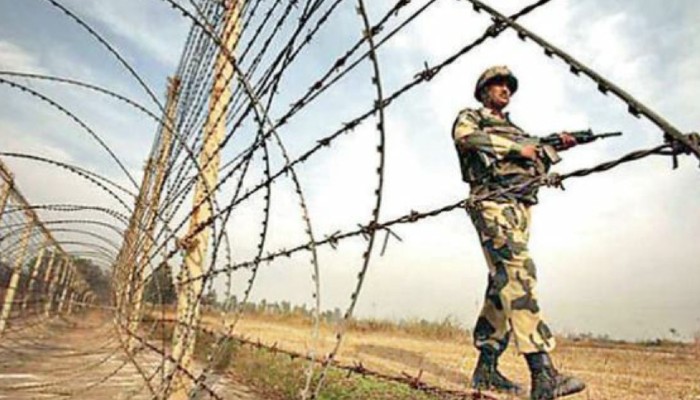The art form has been passed from one generation to the next for many centuries now
Several centuries after a scholar-saint from Persia introduced Kashmir to paper mache, practitioners of this ancient art are breathing new life into it using innovative ideas.
While these artisans have seen several ups and downs over the years, one thing has remained constant – their passion to create something unique using an art form that has been passed down the generations.
Meet Shafath Reshi, a Kashmiri settled in Karnataka who has many foreign clients with the hot favorite among them being paper mache goods.
Shafath has been running his ancestral business of Kashmiri handicrafts in Bengaluru, Karnataka for decades now. He took over the business from his father. "Kashmiri handicrafts are always in demand. My customers love paper mache products and demand different products and varieties," he says.
He further says that at the time of Christmas, he sells paper mache balls, stars and other things which are used to decorate the Christmas tree. He also exports these to his clients overseas. "Eggs are sold on the occasion of Easter and on a usual day as well, the demand remains good," he adds.
In addition to his shop, Shafath also has his Instagram and Facebook pages where he receives orders.
"My father wanted to bring Kashmir to Bangalore so he came here and opened his shop, Sheritons Museum. We have been living here for more than three decades and cater to the demand of Kashmiri product lovers," he explains. Shafath says that he has seen downs in the business as well, but most of the time, the demand has remained high.
Over the years, the business has seen innovations as well.
"I have seen my friends creating paper mache jewelry and they are selling like hot cakes in Kerala. Many youths have taken to their social media to sell paper mache products like rings, ladies clutches, necklaces, slippers etc," he points out.
According to Shafath, paper mache is not only a form of art but also of storytelling.
"Every product you see has a story behind it. It's created through the dedication of artists. They create designs with something in mind and visualize that story on the paper pulp structure," he explains.
55-year-old Mehraj-u-din has seen many ups and downs in his life of being a paper mache artist. From being one of the most active business persons to sitting idle and creating artifacts, Mehraj has seen it all. "There was a time when I would have no time to sit and eat food but that era is gone now. We hardly sell a piece in a week now," he says.
But he has carried on regardless. In his roomful of beautiful creations, Mehraj-u-din gives life to structures created out of paper pulp.
"When pieces are created, they look so simple but we infuse life into them through our hard work," he explains. He says it's the vision of his eyes that reflect in the form of magnificent pieces.
Paper mache was introduced in Kashmir in the 14th century by Mir Syed Ali Hamdani, a scholar-saint from Iran (then Persia).
While visiting the Kashmir region, he brought along skilled artisans and craftsmen. Over the years, Kashmiris infused their own techniques into this art and passed it down generations.
Like Shafath, Mehraj has also been handed down the art by his ancestors. "I quit my studies to join this art," he says. When he was young, the works of his father would fascinate him. He wanted to create his own patterns and designs and today he's living his passion.
"My father had 20 people working with him and all of them would be so busy but today we can hardly survive. Demand here has fallen considerably and for the past two years, nothing is left of it," he says, a bit rueful.
However, there are still those who are gaining popularity and fame by going the extra mile.
Shabir Ahmad, 53, became an Internet sensation in Kashmir when his pictures of Ertugrul, a Turkish series hero, got famous.
A paper mache artist by birth, he lost most of his creations in a fire but he didn't stop and went on working towards his passion. He made use of paper mache techniques to create paintings.
"I am a paper mache artist but I've moved towards paintings. Instead of paper, I use brick and glue and create the mixture in the same manner," he explains.
At first, he makes a powder out of bricks and then sieves it through a cloth. He then mixes it with resin glue and works out the consistency needed. Then, he makes a painting on paper, picks this mixture with a pen and outlines the painting.
'I give it a 3D form through this mixture and mount the dimensions as the painting demands," he explains.
Malik gets up early and sits at his station till 2 am in the night. "I work on paper mache items and paintings too. If I get an idea about creating a certain something in the dead of the night, I get up at that time only so that I won't forget it in the morning. Initially, I would fear making photos as I had no training but now I make them freely," he says.
Calling his art a divine gift, Malik says he was interested in drawing since his childhood.
'My teachers would praise my skills and all boys would surround me in that class. They would ask me to help them. The interest developed to such an extent eventually that I stopped studies and dedicated all my time to it only," he recalls.
The making of paper mache products is itself an interesting tale.
"There are two aspects of Kashmiri paper mache which is Sakhtsazi and Naqashi. Sakhtsazi, is all about the foundation of the object with the paper pulp, while Naqashi includes painting and decoration, " Mehraj explains.
In the first stage of making a paper mache product, the paper pulp is soaked in water for three or four days. It is then put in a stone mortar and ground so that all of the paper is uniform in its consistency. The pulp is then left in the sun to dry before being mixed with glue, usually made of rice.
After this, he says, "mold made of clay or wood allows the artist to shape the paper and glue mixture around it. The paper is taken off the mold before it is completely dry, and then shaped and lacquered to make the outside smooth. After this process is through a thin layer of butter paper protects the outside."
According to Abdul Rehman, another artist, during the Naqashi stage, a base coat of paint is applied. Then the artists make their design by hand on the outside of the paper mache object. Artists often make use of color derivatives from minerals, organic, or vegetable bases.
Common themes on paper mache goods include flowers, box patterns, jungle motifs, and Kashmiri symbols like almonds and the chinar, a five-clover leaf etc.
To make sure that traditions like making paper mache products continue to thrive in Kashmir and give a boost to the handicraft sector in the region, the administration has established the first shared facilitation center for craftsmen at the Indian Institute of Carpet Technology (IICT) in Srinagar.
 Contact Us
Contact Us  Subscribe Us
Subscribe Us









 Contact Us
Contact Us
 Subscribe
Subscribe
 News Letter
News Letter

